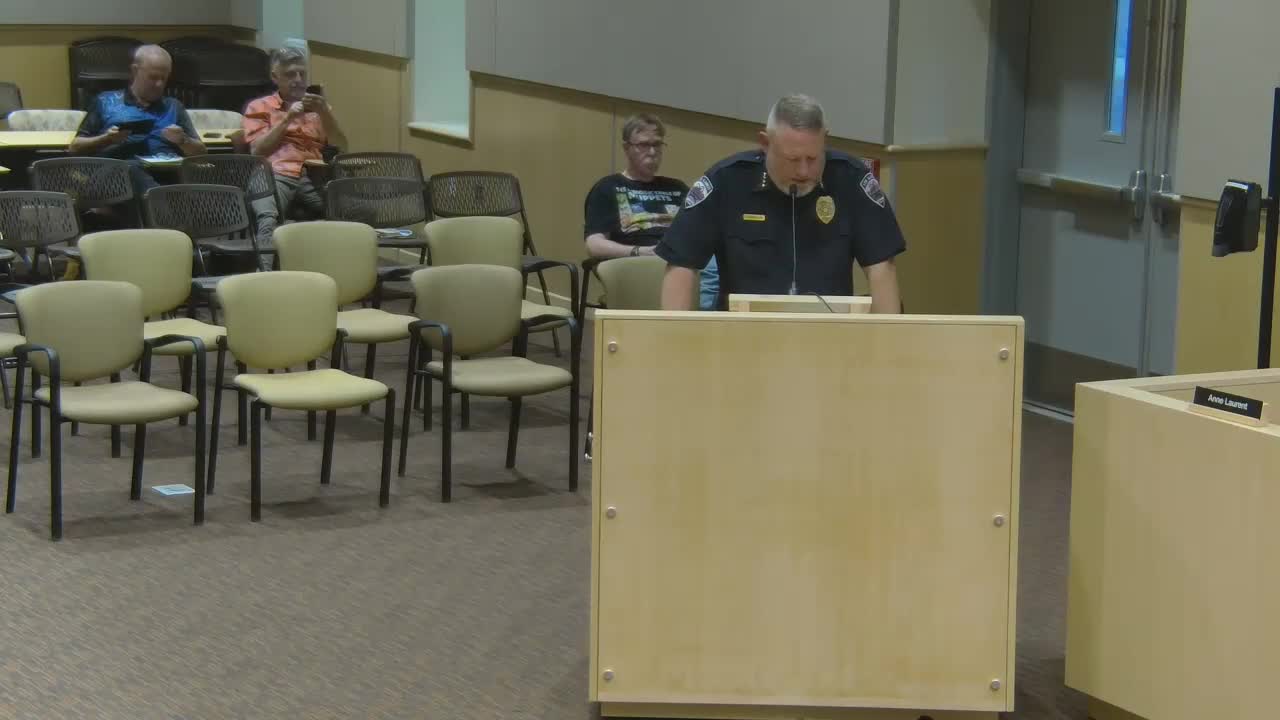Los Alamos Council Reviews Proposed Ordinance to Prohibit Wildlife Feeding
July 29, 2025 | Los Alamos, New Mexico
This article was created by AI summarizing key points discussed. AI makes mistakes, so for full details and context, please refer to the video of the full meeting. Please report any errors so we can fix them. Report an error »

In a recent Los Alamos County Council meeting, discussions centered around a proposed ordinance aimed at prohibiting the feeding of wildlife, particularly deer. This initiative stems from concerns about the health of the deer population and the potential safety risks associated with wildlife congregating near human habitats.
The meeting highlighted feedback from Ruidoso, where officials noted improvements in deer health since similar regulations were enacted. Council members expressed a desire to understand the ordinance's effectiveness, particularly in relation to traffic safety and wildlife health. The chief of animal control indicated that the ordinance was designed to mitigate issues arising from residents feeding deer and other wildlife inappropriate foods, which can lead to health problems for the animals and increased human-wildlife interactions.
Councilor Reedy raised questions about the data supporting the ordinance, emphasizing the need for clarity on its intended impact. Anecdotal evidence was shared regarding a bear sighting in White Rock, suggesting that feeding practices might attract larger wildlife into residential areas. This raised concerns about public safety and the potential for accidents involving wildlife.
Public comments during the meeting reflected a mix of opinions. Some residents, like Rick Neebel, questioned the ordinance's potential effectiveness, arguing that the deer population appears healthy and that the ordinance may not address the root of the problem. Others, such as James Wernicke, cautioned against implementing regulations that might not yield tangible results, suggesting alternative solutions like infrastructure improvements to redirect wildlife away from roads.
The council also discussed enforcement challenges, particularly given the absence of a local sheriff to oversee such regulations. The chief noted that while state laws exist regarding wildlife feeding, local enforcement would be complicated without dedicated resources.
Ultimately, the council moved to direct the county manager to implement the draft ordinance changes and return with a revised version for further consideration. This decision reflects a growing recognition of the need to balance wildlife conservation with community safety, though the path forward remains fraught with questions about effectiveness and enforcement. As the council prepares to revisit the ordinance, the community will likely continue to engage in discussions about the best ways to coexist with local wildlife while ensuring public safety.
The meeting highlighted feedback from Ruidoso, where officials noted improvements in deer health since similar regulations were enacted. Council members expressed a desire to understand the ordinance's effectiveness, particularly in relation to traffic safety and wildlife health. The chief of animal control indicated that the ordinance was designed to mitigate issues arising from residents feeding deer and other wildlife inappropriate foods, which can lead to health problems for the animals and increased human-wildlife interactions.
Councilor Reedy raised questions about the data supporting the ordinance, emphasizing the need for clarity on its intended impact. Anecdotal evidence was shared regarding a bear sighting in White Rock, suggesting that feeding practices might attract larger wildlife into residential areas. This raised concerns about public safety and the potential for accidents involving wildlife.
Public comments during the meeting reflected a mix of opinions. Some residents, like Rick Neebel, questioned the ordinance's potential effectiveness, arguing that the deer population appears healthy and that the ordinance may not address the root of the problem. Others, such as James Wernicke, cautioned against implementing regulations that might not yield tangible results, suggesting alternative solutions like infrastructure improvements to redirect wildlife away from roads.
The council also discussed enforcement challenges, particularly given the absence of a local sheriff to oversee such regulations. The chief noted that while state laws exist regarding wildlife feeding, local enforcement would be complicated without dedicated resources.
Ultimately, the council moved to direct the county manager to implement the draft ordinance changes and return with a revised version for further consideration. This decision reflects a growing recognition of the need to balance wildlife conservation with community safety, though the path forward remains fraught with questions about effectiveness and enforcement. As the council prepares to revisit the ordinance, the community will likely continue to engage in discussions about the best ways to coexist with local wildlife while ensuring public safety.
View full meeting
This article is based on a recent meeting—watch the full video and explore the complete transcript for deeper insights into the discussion.
View full meeting
